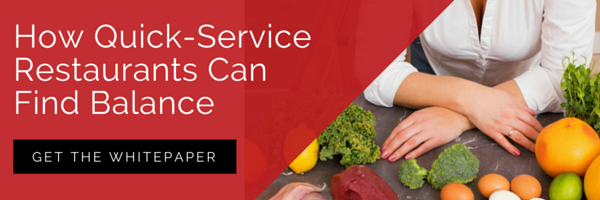
The growing significance of sustainability and quality fast food sourcing were the key takeaways at the recent NRA show in Chicago as consumers continue to seek out better food options for themselves and their families, even in a fast food setting. What caused sustainability to be such a great concern to the mainstream buying public, and how can a business benefit from opting for transparent, sustainable food sourcing and packaging methods? A look at the history of the business of food and the shift of consumer perception over time reveals some surprising insights.
Fast, Easy and We Don’t Care How You Get There
The sustainable food movement has deeper roots than you may think. While the relatively recent surge of consumer interest in not only where food comes from, but how it is produced and packaged makes sustainability a priority for most restaurant chains, the birth of the movement lies decades in the past.
As the country recovered from World War II, innovations in food production allowed the industry to supply more food and more conveniences for less money. Fast food outlets were embraced by busy consumers and the race to provide cheap eats as quickly as possible, to as many customers as possible began. Subsidies for cheap crops like corn and soy also led to an influx of low quality food items on menus, decreasing the nutritional value of the food produced. According to sustainability pioneer Michael Pollan, most consumers and producers during this time never stopped to think about where their food came from or how it was produced; low cost and high convenience were the primary goals.
By the 1970s, though, some consumers and producers were beginning to question where that food was actually coming from and how it was being grown and produced. Concerns about cheap food and the impact it had on the restaurant and food industry continued to grow through the 1980s, but the biggest impact for consumer awareness came in 1993. Four children died that year after consuming hamburgers tainted with E.coli, purchased at a Jack in the Box fast food restaurant. The resulting outcry about food safety and animal antibiotics opened a public dialogue about how food is produced. By 2001, Fast Food Nation had become a surprise bestseller and firmly cemented the questions about cheap food, safety and sustainability into the general populace.
Questions Arise About Food and Sustainability
Several decades ago, most customers would eat whatever a fast food joint served up, without asking about nutrition, quality or sustainability. But not anymore. It’s not just activists or health fanatics anymore. Today, thanks to the prevalence of information about livestock conditions, the plight of farm laborers and highly publicized bacterial outbreaks, even the average consumer has questions about food safety and sustainability.
Consumers Actively Seek Out Sustainability
Sustainability and technology were the hottest topics at the recent NRA show in Chicago, with most of the top trending topics relating to sustainability. According to the NRA the most popular trends in table service right now are heavily weighted towards sustainability and local sourcing of food. Diners are particularly concerned with:
- Buying locally sourced meats, seafood and produce
- Foods made with natural ingredients with a minimal amount of processing
- Environmental sustainability in packaging and production of food
- Healthy, sustainable meals — especially for children
The Rewards of Sustainability
As consumers continue to demand minimally processed, sustainable foods, methods and processes, they tend reward those restaurants who focus on offering these items with their loyalty. Recent case studies have proven that customers are more willing to fork over cash for items they perceive as healthy, sustainable and high quality — a lesson Italian fast food concept Fazoli’s learned the hard way. The Lexington Kentucky based business were initially successful in tempting customers with rock bottom prices, but consumers eventually began to view the low cost foods as low quality items.
In contrast, businesses that are letting customers know about their sustainable efforts are thriving.
Increasing transparency into where the food you serve comes from can build trust with your target customer and reinforce your brand image as a provider of healthy, sustainable products. From the packaging you use to the menu items you offer your customer, sustainability can help boost your brand, buyer perception and your bottom line.






